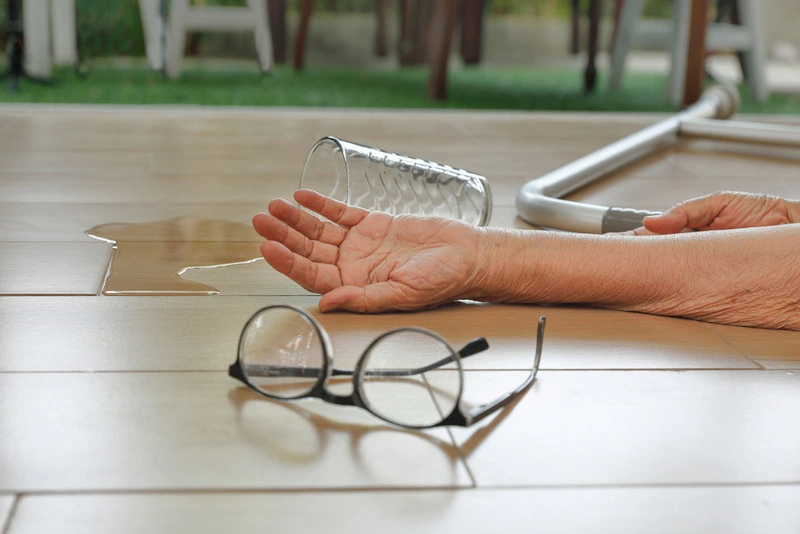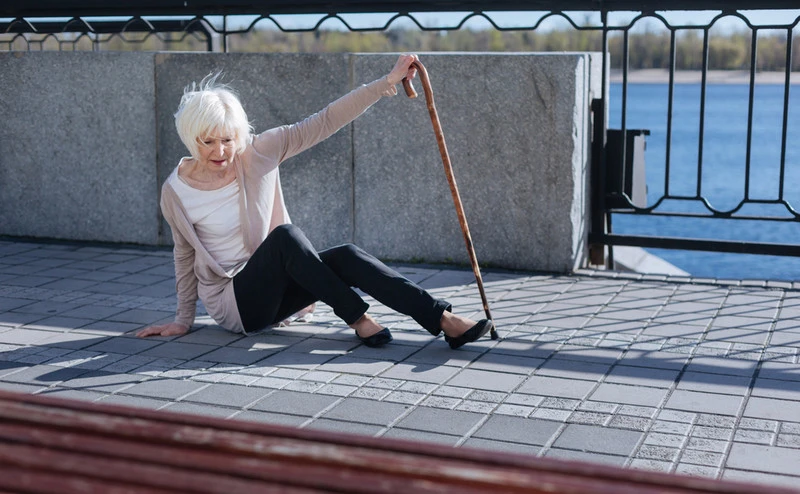More than 36 million older adults have a fall each year. Of that number, 32,000 of those incidents...
More than 36 million older adults have a fall each year. Of that number, 32,000 of those incidents result in death according to the CDC. Each year more and more adults are treated in clinics and emergency rooms for a fall injury — and one out of five falls causes a broken bone or head injury. In many cases, some seniors - particularly those living alone - have problems reaching the phone or getting help after they fall. It is a major problem in the healthcare industry. That’s why automatic fall detection devices or systems are a great, easy-to-integrate solution, for most seniors and their caregivers.
What is fall detection?
Fall detection devices are designed to detect falls and alert caregivers of incidents. Some devices, like CareMate, learn to recognize instability to provide a warning to help prevent falls. CareMate also takes measurements from a variety of sensors helping to minimize false positives (sensor fusion). This is a relatively new technology that helps in monitoring elderly patients remotely, especially those who live alone. Nevertheless, it’s important to note that it is not a tech tool specifically designed for the elderly. There are many other people that can benefit from fall detection with remote patient monitoring — including people with motor function issues, folks in post-op recovery, and even athletes. Today, the benefits of these devices are manyfold and their functionality has been integrated into smartphones and consumer-grade wearable tech.
How does fall detection work?
The fall detection device captures a variety of metrics that the caregiver and the patient can view, including things like movement, temperature, and more.
There are many types of fall detection devices available in the market right now. From complex options to simple apps.
In senior care centers, they normally work the following way: sensors are fitted on the body of elderly patients to detect vitals. When they trip or fall an alert goes out automatically informing caregivers of the incident.

Another type of device, the one that is becoming more common in today’s market, is wearable tech. Products like your smartphone or smartwatch. These devices are fitted with a sensor called a triaxial accelerometer. This sensor measures distance, speed, and direction. As technology has evolved, companies like Samsung, Apple, Google, and others have supercharged this sensor - leveraging algorithms, machine learning, and AI to make it better. Today this sensor can look for patterns of movements and identify a fall — for example, by quickly analyzing a rapid acceleration followed by no movement. When the device picks up something of this nature, the app automatically dials up a pre-registered number - your emergency contact and informs them of what has happened. The software sends them GPS coordinates and activates your device's two-way speaker.
Today, fall detection tech is not only using cutting-edge tech but incorporating additional sensors such as gyroscope, barometric pressure sensors, and magnetometer to better its functionality. These extra sensors can help decrease false alarms. They can also inform caregivers of the type of fall a person suffered, allowing them to prepare for the incident and respond more effectively.
What types of incidents does automatic fall detection notice?
There are many different types of falls that can occur. These types of incidents can range from minor to major, and each type of fall should be treated differently. Some fall detection devices, depending on their sensors, can do this better than others.
Fall detection devices are becoming more popular because they provide a way for monitoring the individual to quickly detect falls that may not have been noticed otherwise — and respond quickly. There are many different types of falls that are measured with these devices.

Types of Falls:
- Slip and Fall: This is the most common type of fall. These falls are often caused by instability on a slippery surface.
- Trip and Fall: These falls are caused by tripping over an object, such as a chair or a rug.
- Fall on the same level: These falls are due to slipping on an object that was not visible, such as ice or oil.
- Falling Downstairs: This type of fall is due to slipping or tripping while going up or down stairs.
- Running fall: mostly during a workout, this is a common type of fall for athletes or active senior citizens.
Can fall detection tech identify potential problems before they happen?
Thanks to the rise of AI and big data analytics, fall detection for elderly patients has never been as complete as it is today. Currently, this type of tech can not only detect falls but can actually predict them based on other metrics collected by remote patient monitoring systems. For example, if blood oxygen level is below the standard for that patient, or if there is a cardiac incident occurring. Along with other sensors, caregivers can actually stay ahead of an incident and respond to a red flag even before it happens.
Fall detection devices — for whom are they useful and necessary?
Fall detection tech is a critical part of a medical alert system. It is an important step in creating a holistic healthcare service for people prone to falls — and in many cases an essential feature of any remote patient monitoring platform or solution. Why are they so critical? Because they can call for help when you fall, even if you can’t reach the phone, or have passed out.
How does automatic fall detection benefit seniors?
Automatic fall detection is a feature that is becoming more and more common in wearable technology. With this new technology, seniors can alert caregivers when they have fallen and can get help faster.
This innovation has many different benefits for seniors who are living alone. This includes the ability to lower their risk of injury by getting help faster, as well as increased independence because they don't have to rely on others for help. In addition, the product may also increase their safety by actually preventing falls.
Why is fall detection important?
After 65, one-third of all people will experience a fall. And two-thirds are liable to fall at least twice in a year according to the CDC. This is a natural result of age. Changes such as poor eyesight, poor hearing, or balance control, make falls inevitable. That is why fall detection devices for the elderly are so important.